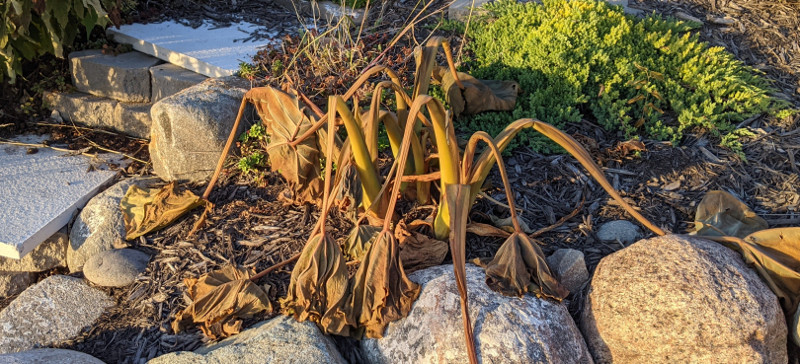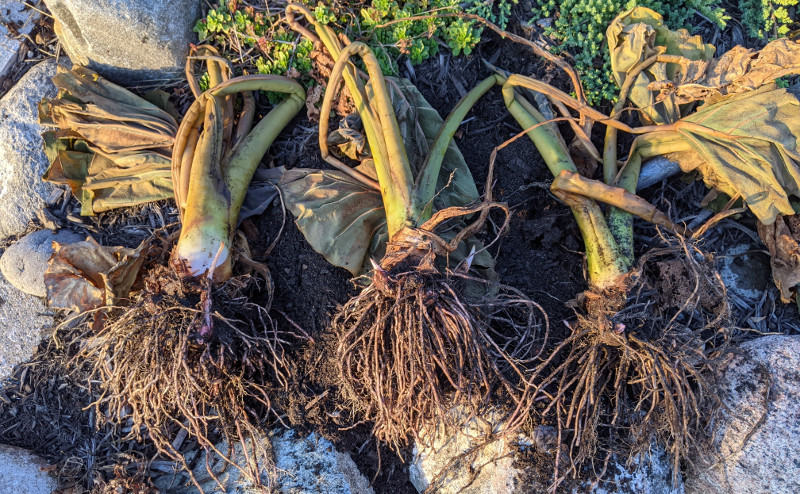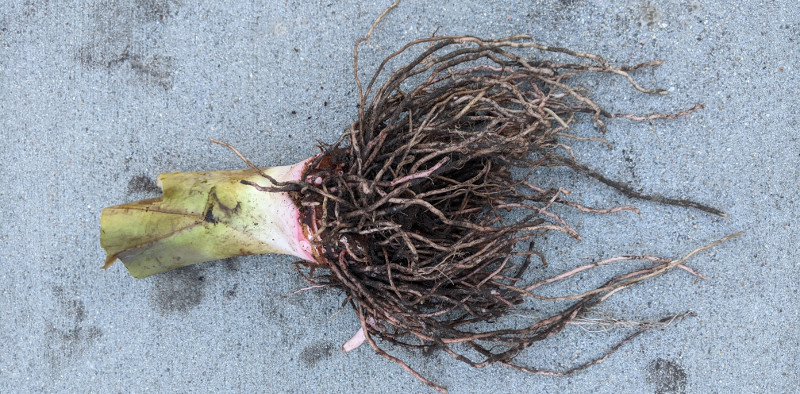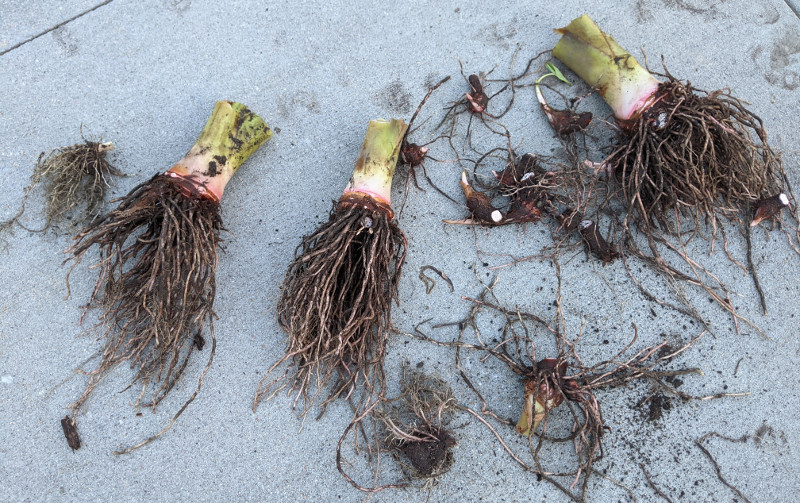In most growing zones, gardeners will need to dig up their bulbs for the winter. This includes alocasia, colocasia, caladiums, and other bulbs. If you live in growing zones 8 or hotter, you may be able to just leave your elephant ear plants in the ground over the winter. The plants cannot tolerate frost, so if your area has the threat of freezing overnight, you may risk the plants dying.
If you live in growing zones 7 and colder, follow these easy instructions to keep your elephant ears alive over the winter, and ready to plant the following spring.
Best Time To Dig Up Elephant Ears
Here is a picture of elephant ears after the first frost. You will notice the growth above the soil has essentially died back and turned brown. This is the perfect time to dig up the bulbs.

Do not allow the bulbs to go more than 1 night in freezing temperatures though, as the bulbs themselves will eventually die as well, not just the growth you see above the ground.
How To Dig Up Elephant Ears
When you dig up the plants, you need to ensure you get the shovel underneath the bulbs. The bulbs and roots should come out of the ground relatively easy if you dig deep enough.

You can see the entire root ball and bulbs here in this picture. This all came up in one chunk together.

Dividing Elephant Ear Bulbs
Then you can begin to separate the main bulb, from the new bulbs that have grown. For this plant, we were able to separate the plant into 3 separate bulbs easily without much pressure.

Once you have separated the bulbs, get as much of the soil off of the plants as possible. This helps the bulbs dry out and prevents mold from growing on the plants.

Optional - you can cut the roots off ahead of time, or you can let them dry out and fall off. If you do cut the roots, make sure to not cut into the bulb (or corm).
Next cut off the green growth above the bulb. Do not cut too far down into the plant. In this example we cut off the grown, but were very conservative with how far down on the plant we cut. You can get closer to the bulb than this.

How to Store Elephant Ear Bulbs
After you have the bulbs ready and trimmed, you will want to store the bulbs in a cardboard box or tray that gets good air circulation and that won't hold in moisture.

Once you put the bulbs into a cardboard box, keep a close eye on the bulbs for the next several weeks. You want to make sure there isn't any rot or mold growing on the bulbs. If you do notice mold growing, cut it off right away. As the old leaves and parts of the plants dry out, you can pick those parts off of the plant to help prevent mold as well. Eventually, you want the entire bulb to dry out.

Elephant Ear Winter Care
Once the bulbs dry out completely, store them in a location that is really cool, but doesn't freeze. Around 40-45 degree fahrenheit is the ideal temperature. The location should also be completely dry. Typically this is around December for most growing zones. Typically a garage that doesn't freeze works great, or a cool basement location.
The cold temperatures help the drying process to continue, and keeps the corm dormant.
Planting Elephant Ears
Keep the bulbs in a cool location until you are ready to plant. You can start warming the bulbs up a week or two before you plan to plant them in the garden. Make sure the threat of frost is gone before planting, as the bulbs cannot handle freezing temperatures.
 |
Author Chris Link - Published 11-03-2021 |
